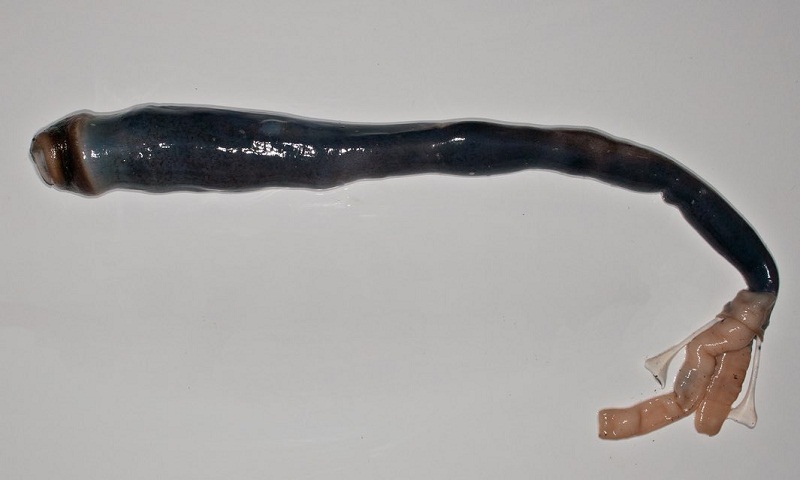Bizarre bivalve: first living giant shipworm discovered in Philippines

Mud-dwelling organism that lives head down in a tusklike tube found alive for first time, although its existence had been known of for centuries About three feet long and glistening black with a pink, fleshy appendage, it looks like the entrails of an alien from a bad horror film. In fact, it is a giant shipworm. Discovered in the mud of a shallow lagoon in the Philippines, a living creature of the species has never been described before – even though its existence has been known for more than 200 years thanks to fossils of the baseball bat-sized tubes that encase the creature. “Although people have known [these animals] exist, they didn’t know the simplest things about them,” said Dan Distel of Northeastern University’s marine science centre and co-author of the study published in the journal PNAS. “It was a very mysterious organism.” Distel points out that a description based on a museum specimen was made decades ago, but adds that the creature was not well preserved. “We think, among living biologists, anyway, our group are probably the only group that has seen living specimens,” he said. With the Linnaean classification Kuphus polythalamia, the creature lives in the mud inside a long tube made of calcium carbonate secreted by the animal. The tube forms a casing for the beast, including its head. “If they want to grow, they have to open that end of that tube, so somehow dissolve or reabsorb that cap on the bottom, grow, extend the tube down further into the mud, and then they seal it off again,” said Distel. The end of the tube, adds Distel, is Y-shaped and surrounds two siphons – water is drawn in through one, pushed through the creature’s gills, then expelled through the other. Despite being known as a shipworm – a nod to its relatives’ diet of submerged wood – the animal is actually a type of clam. It has a modified version of two clam shells at its head, while the body stretches out behind. “Its body has been stretched out through evolution so that it no longer fits between the two shells,” said Distel.

